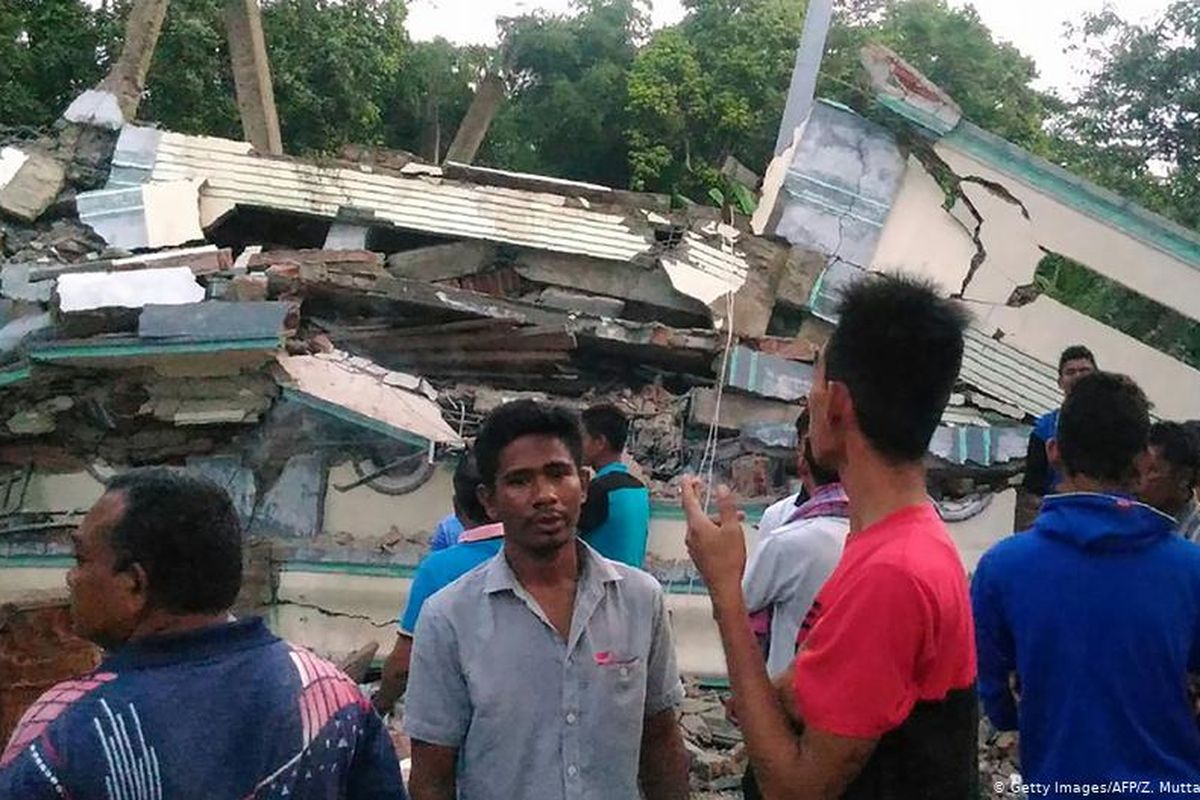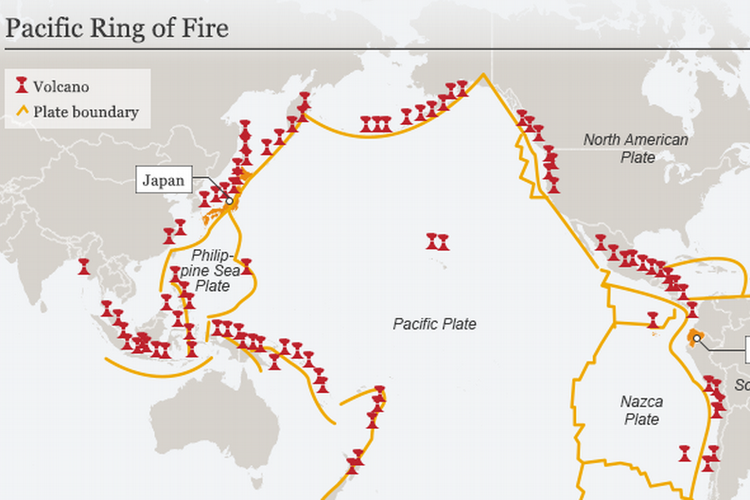
KOMPAS.com - How big is the Pacific Ring of Fire?
The Ring of Fire dominates the Pacific Ocean. It's a string of at least 450 active and dormant volcanoes that form a semi-circle, or horse shoe, around the Philippine Sea plate, the Pacific Plate, Juan de Fuca and Cocos plates, and the Nazca Plate.
There is a lot of seismic activity in the area.
About 90 percent of all earthquakes strike within the Ring of Fire.
This means people's lives are under almost constant threat in Indonesia, the Philippines, Malaysia, Japan, Australia and New Zealand, Papua New Guinea, and other island nations like the Solomon Islands, Fiji, and many more in Melanesia, Micronesia and Polynesia, all the way east to the western seaboard of the North and South Americas.
Also read: Indonesia's Mount Merapi Continuously Spews Hot Clouds and Ash
 Hot clouds come out of the crater of Mount Semeru, East Java on Saturday (16/1/2021)
Hot clouds come out of the crater of Mount Semeru, East Java on Saturday (16/1/2021)Although levels of threat differ depending on local factors like your proximity to the quake's epicenter, whether it's out to sea or on land - and standards of housing.
Why so many volcanoes in the Ring of Fire?
The tectonic plates move non-stop over a layer of partly solid and partly molten rock. This is called the Earth's mantle.
When the plates collide or move apart, for instance, the Earth moves, literally. Mountains, like the Andes in South America and the Rockies in North America, as well as volcanoes have formed through the collision of tectonic plates.
 A map of volcanoes around the Indo-Pacific Ring of Fire
A map of volcanoes around the Indo-Pacific Ring of FireMany volcanoes in the Ring of Fire were created through a process of subduction. And most of the planet's subduction zones happen to be located in the Ring of Fire.
What is subduction?
Subduction happens when tectonic plates shift, and one plate is shoved under another. This movement of the ocean floor produces a "mineral transmutation," which leads to the melting and solidification of magma - that is, the formation of volcanoes.
Basically, when a "downgoing" oceanic plate is shoved into a hotter mantle plate, it heats up, volatile elements mix, and this produces the magma. The magma then rises up through the overlying plate and spurts out at the surface.
If, however, the overlying plate is ocean, it can produce a chain of volcanic islands like the Marianas. This is also where we see the Earth's deepest trenches and deepest Earthquakes.

































